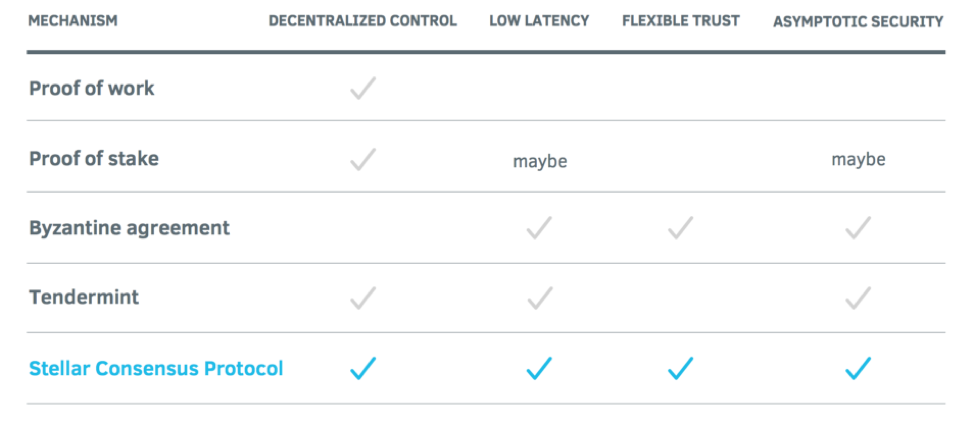Great job getting this far! Now that you understand the problem Stellar wants to solve, We’re ready to dive into the technology behind Stellar.
That’s right. Before reading anymore of this syllabus, there are two parts of Stellar you must read start-to-end. No, it’s definitely not Reddit or news headlines, it’s the official How the Stellar Network Operates and Stellar Basics Explained.
It’s easy to want to jump to the gossip of news articles and subreddits, but take the 10 minutes (I know! Easy right?) to get introduced to Stellar. They did a great job with their documentation, so take advantage of it.
Great! Now that you read the introductory documentation, we can move forward (and a bit more quickly).
Similar to Bitcoin, Stellar is a decentralized network. Instead of information being gathered at one centralized source (like a bank), it is distributed among interconnected nodes (servers) in the Stellar Network.
Anyone can set up a verification node (server) with Stellar Core, the backbone of the Stellar Network that does the actual verification using the Stellar Consensus Protocol (SCP). Think of SCP as Stellar’s algorithm to verify transactions. It’s very different from Bitcoin, which uses proof of work (page 3) to verify transactions.

In Bitcoin, miners work together to verify transactions. In Stellar, the trusted nodes, known as verification nodes (servers) that run Stellar Core, will be verifying the transactions. Think of Stellar Core as the software used to make verification possible.
Thus, the Stellar Network is just a series of Stellar Cores, working together to verify transactions, and make sure everything is up to date. Once a transaction is verified, it will be added to the public ledger.
To help against malicious attacks on the Stellar Network, transactions involve a small fee. The Base Fee is 100 stroops per operation (0.0000100 XLM). Stroops are easier to talk about than such tiny fractions of a lumen.
That is extremely cheap, compared to Visa which takes 1.51% plus 10 cents (USD) per transaction.
As said earlier, Stellar can be used by banks or micro-financial institutions (MFIs). Nigeria, the largest country in Africa, has a community that is financially underserved.
Instafin, a banking platform used by many MFIs, will soon have implemented Stellar into their own system.
Thus, people in Nigeria can send payments through an MFI, to another MFI in a distant village. The transactions will go into the Stellar network, and cost a lot less. The transaction won’t have to go through a lot of different central authorities, and instead will be sent directly, at the cost of the base fee (0.0000100 XLM).
The greatest feature about the Stellar Network is that you can send and receive different kind of currencies, such as Fiat (USD, TRY, JPY, EUR, GBP, KPW), Digital currencies like Bitcoin, or even your own kind of asset, like airline miles or hotel points. This is not possibly with Bitcoin and many other cryptocurrencies.
These multi-currency transactions are made possible by a built-in market mechanism in which people can make offers to buy and sell different types of currencies.
This system is called Distributed Exchange. Stellar will automatically find the best prices to exchange currencies for the user. The Stellar Lumen section of this syllabus will provide you with more resources on this.
The best place to start with any cryptocurrency is the White Paper, a document that explains exactly what the protocol is and how it works.
The problem with Stellar’s white paper is that it is very technical. You may have understood the basics of the Stellar Network, but the white paper explains the Stellar Protocol in-depth. Essentially, it tells us in a technical way how all the Stellar Cores achieve consensus to verify transactions.
After 3 years of studying Computer Science at university, I was still having trouble understanding it completely. So we provided easier-to-understand resources in this section, such as the cute “Adventures in Galactic Consensus” comic they put together.





